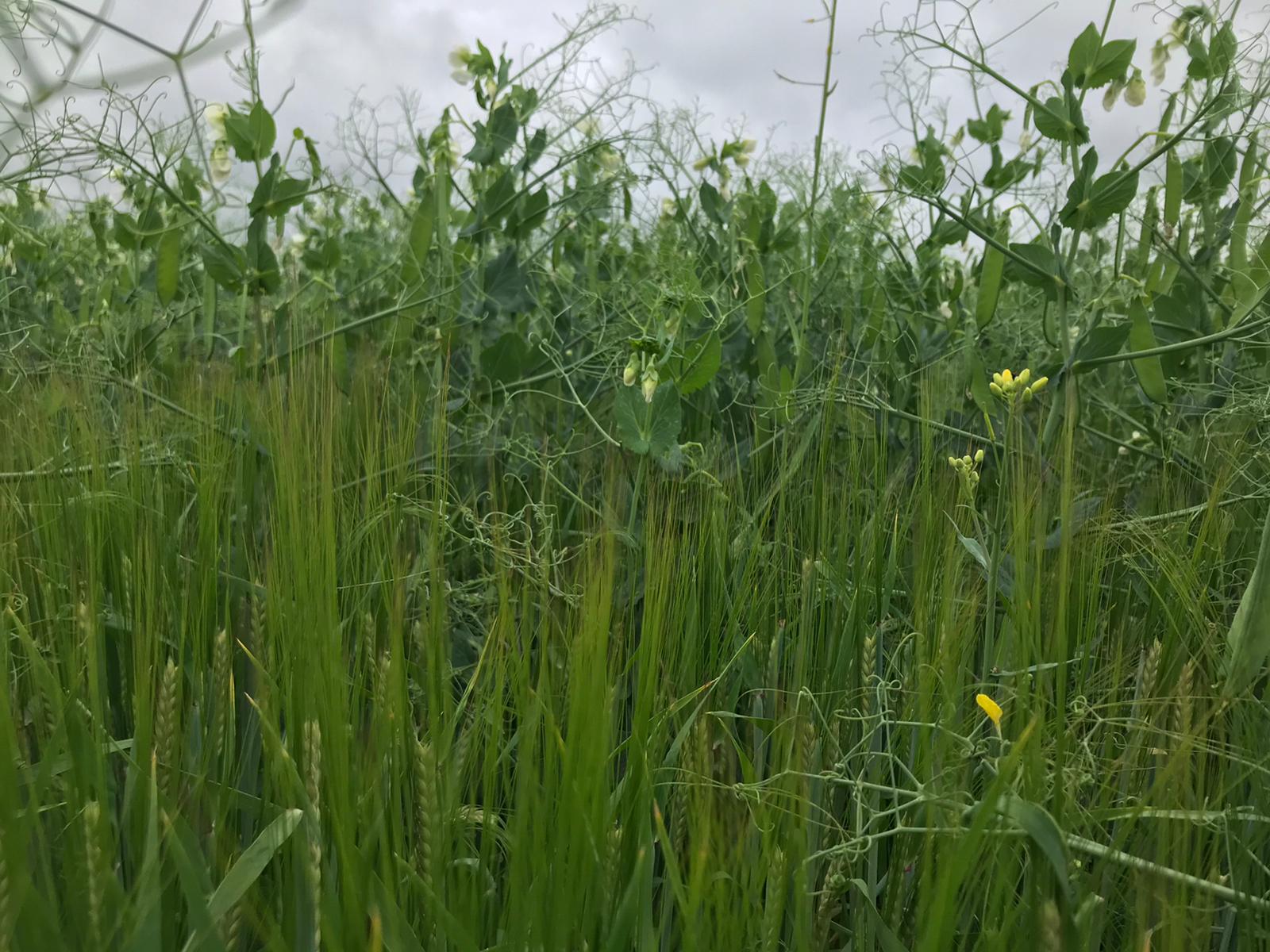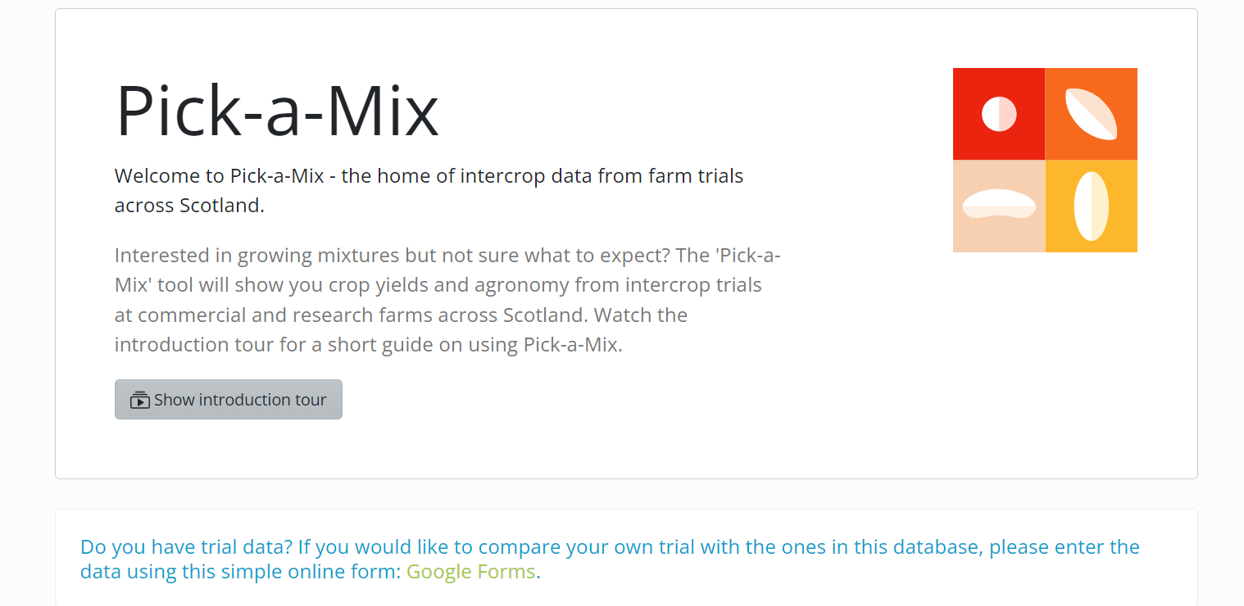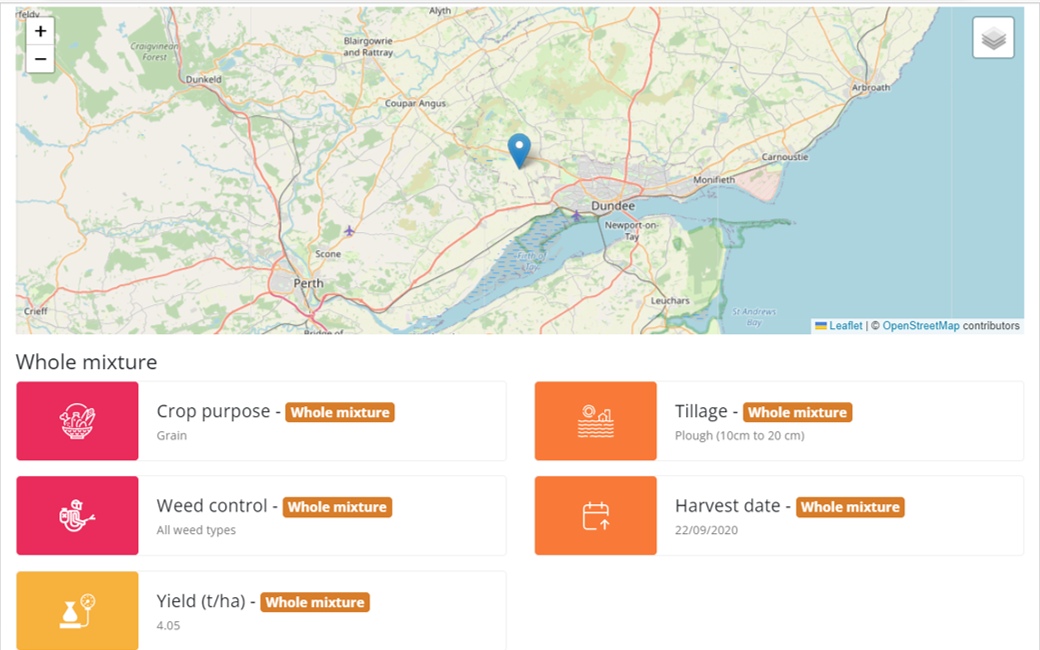- mandy.holasek's Blog
- Log in to post comments
‘Pick-a-Mix’ helps you find the sweet spot for growing crop mixtures
Alison Karley, Sebastian Raubach, Paul Shaw, Susan Verrall, Robin Pakeman, Adrian Newton, Roy Neilson, Rob Brooker
The way we currently produce food and other agricultural products is under threat from the changing climate, depleted biodiversity, and declining availability of natural resources used to boost productivity. We know that farming systems need to shift towards co-delivering for nature and net zero, but this needs to happen without compromising production and food security. Farming faces huge challenges from these pressures, while coping with climate variability, degradation of prime agricultural land, and restrictions on pesticide use.
What can farmers do in the short-term to address these multiple challenges? Intercropping - where two or more crop species are grown simultaneously on the same piece of land – could provide one solution: intercrops increase diversity at the scale of entire fields and have the potential to boost production with fewer inputs.

There are many ways in which intercropping can be practiced, ranging from mixtures harvested together for use as ‘whole crops’ or for separation post-harvest, to relay intercrops grown together but harvested on separate dates, through to unharvested companion crops supporting the growth of the main cash crop. The harvested products are often used for feed, biomass, or food but could include novel co-products with other uses in the future.
Although the multiple potential benefits of intercrops are well established, and the underpinning mechanisms are reasonably well characterised, crop mixtures are still not widely used as a farming practice in the UK and much of Europe. There are many reasons for this, ranging from lack of technical know-how and access to appropriate equipment to market acceptability and regulatory issues. For individual farmers, a major question to answer is ‘how will this work on my farm’?
This is the question we have tackled in our research at the James Hutton Institute. Like any farming practice, the application of intercropping will vary with local soil and climatic conditions, farmer’s access to equipment, type of farm management, and how the harvested product will be used. Over the past four years, we have been working with farmers and land managers across eastern and central Scotland to trial arable intercrops under realistic farm conditions, gathering data on intercrop yield and agronomy to examine intercrop performance under a range of farming environments and approaches.
These trials were carried out in a coordinated way, ensuring each trial included monocultures of each mixture component in the same field or nearby. Comparable data were collected at each trial site, meaning that we could analyse and present the findings in a standardised way. Our goal was to provide information about the trials in an easy to interpret format that is useful to farmers and agronomists, but also to scientists, policy advisors and any others interested in intercrops.

To date, the main output from this work is ‘Pick-a-Mix’ (https://ics.hutton.ac.uk/pick-a-mix/#/), an online tool where the database of intercrop trials can be explored in tabular, map or graphical formats. Users can focus on specific crop mixture combinations or types of farm management to look at the yield performance of mixtures relative to monocrops. The database includes details from each trial of the mixture composition, crop varieties, sowing rates and timing, inputs, and harvest dates, all of which could be crucial information for newcomers to intercropping. Pick-a-Mix is being launched at agricultural events throughout this summer, starting with the Arable Scotland event on Tuesday 4th July at the James Hutton Institute’s Balruddery Farm:
https://www.arablescotland.org.uk/exhibitors/2023.
We have taken this work one step further, by combining the data from our Scottish intercrop trials with a database of arable intercrop trials carried out at farm sites across Europe. This allowed us to create the largest possible dataset of intercrop trials for a ‘meta-analysis’ testing the effects on intercrop yields of crop management (crop composition, soil cultivation, agrochemical inputs) and key climate variables. This analysis provides an insight into when and where intercropping could be a viable practice for increased diversity, sustainability, and resilience.

The power of our approach of gathering intercrop data from farms in a coordinated way has already proven valuable, but it is only the beginning. Our ambition is to generate momentum for ‘open science’ in intercropping and expand the evidence-base to further test whether intercropping is a viable nature-friendly practice, and whether it can improve crop resilience to an increasingly variable environment.
To achieve this ambition, we need to grow the database. This is why we have developed an online data submission form, where people who carry out intercrop trials – farmers, agronomists, scientists – can contribute their data to Pick-a-Mix. If you have an interest in joining our initiative to make intercropping data and knowledge openly accessible for farmers, agronomists, policy, and society, please get in touch. We’d love to hear from you.
https://ics.hutton.ac.uk/pick-a-mix/#/
*Disclaimer: The views expressed in this blog post are the views of the author(s), and not an official position of the institute or funder.







